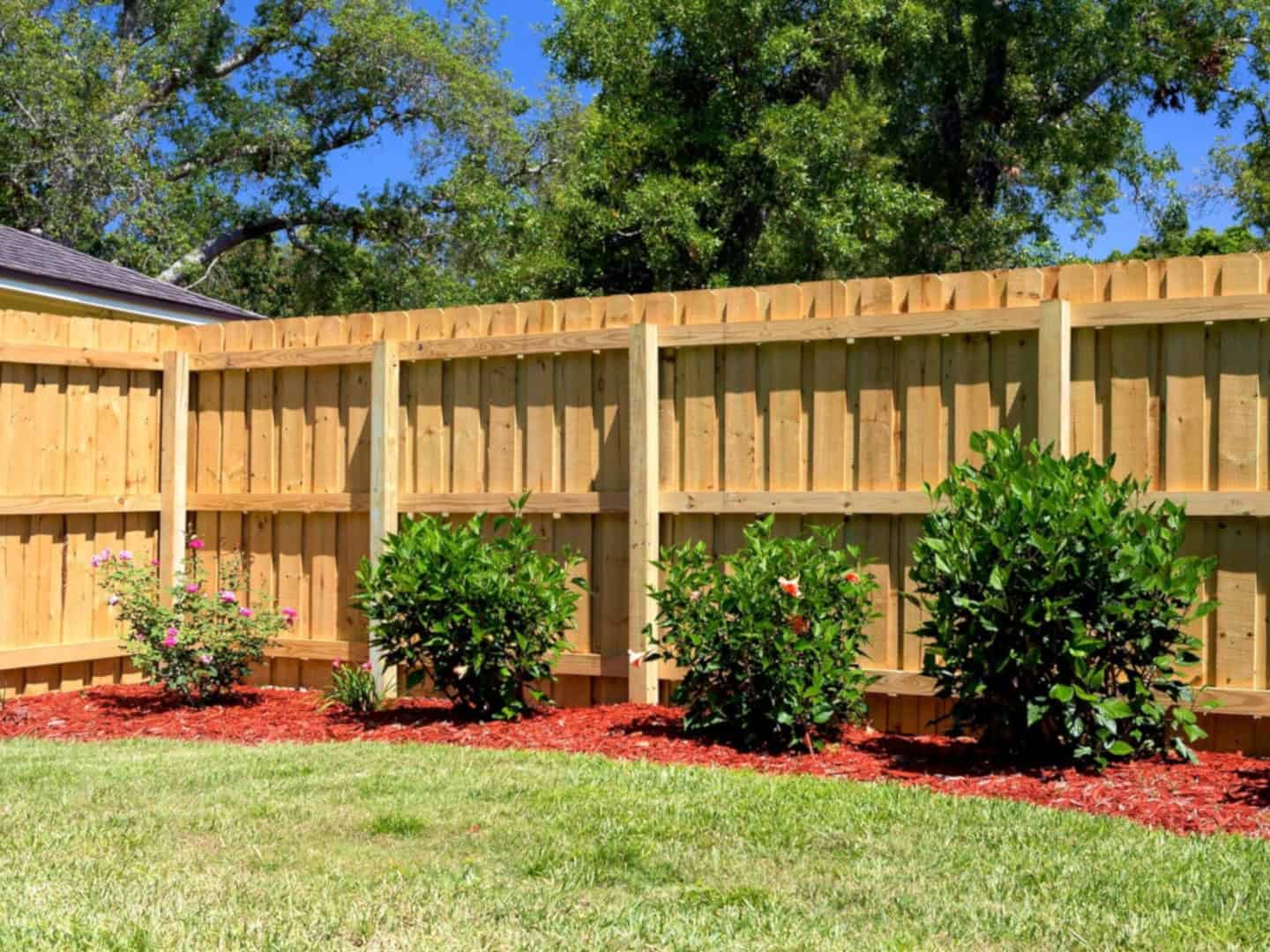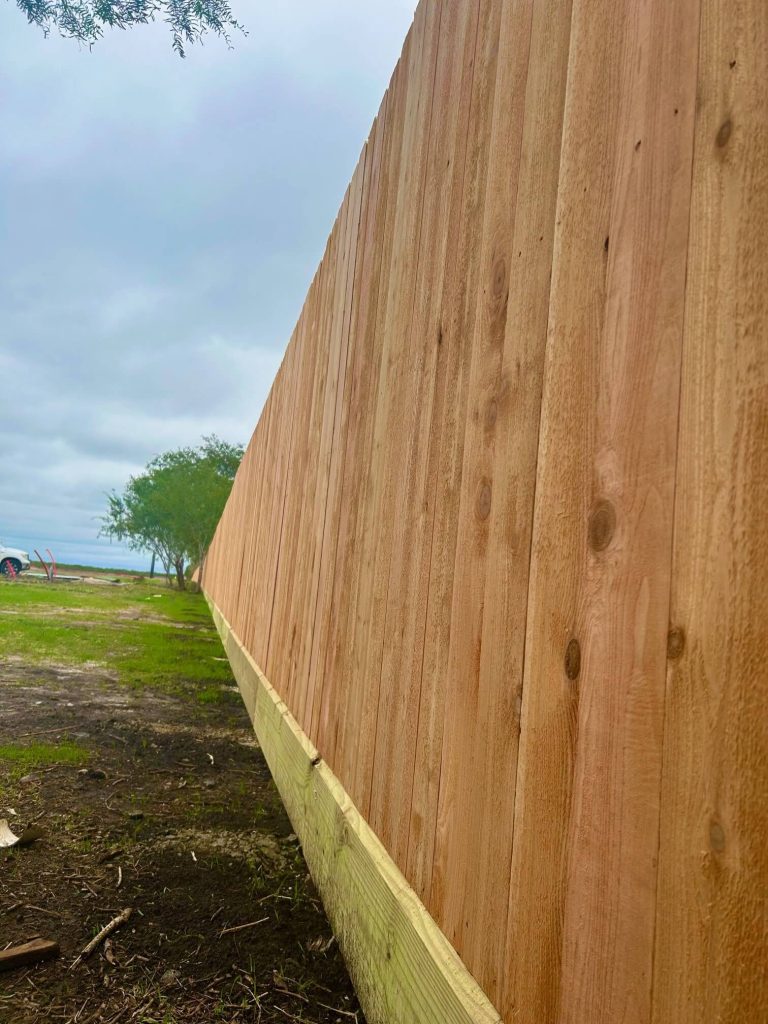5 Pro Tips to Extend Fence Lifespan with fence company near me
5 Pro Tips to Extend Fence Lifespan with fence company near me
Blog Article
The Ultimate List for Effective Fence Installation Jobs
When you're planning a fence installation project, it's crucial to have a clear technique in place. Start by defining your purpose and objectives, whether it's for personal privacy or security (gadsden fence company). Understanding neighborhood policies can conserve you time and headaches later on. From there, choosing the appropriate materials is necessary for both longevity and visual appeals. However there's more to consider prior to you begin. Let's check out the actions that will certainly assure your job is a success
Define Your Function and Goals

Research Local Laws and Permits
Just how do you guarantee your fencing setup goes smoothly? Begin by investigating local laws and licenses. Every location has specific legislations regarding fence-- height, material, and positioning can differ widely. Get in touch with your regional zoning office or building department to recognize what's required in your neighborhood.You could need an authorization before you dig, particularly if you're near residential property lines or energies. Stopping working to comply with policies can lead to fines or even having to remove your fence.Also, consider house owners association (HOA) rules if you reside in an area with one. They typically have extra standards that you'll need to comply with.
Select the Right Products
When selecting products for your fencing, assume concerning sturdiness and exactly how they'll stand up against the elements. You'll additionally intend to strike a balance between aesthetic appeals and capability to ensure your fence looks wonderful while offering its objective. Putting in the time to select the best materials can make all the distinction in the durability and look of your fencing.
Material Toughness Factors To Consider
As you pick products for your fence, it's important to assess their durability, since different options can greatly impact the durability and upkeep of your installation. Wood, while aesthetically pleasing, needs normal treatment to ward off rot and parasites. On the other hand, plastic provides impressive resistance to fading and cracking however can be extra expensive upfront. Steel fences, like aluminum or functioned iron, supply strength and long life, yet they may require regular corrosion security. Consider your regional environment also; severe weather can influence product efficiency. Ultimately, picking the ideal durable material will save you time and cash over time, ensuring your fence stands solid versus the elements and minimizes upkeep initiatives. Pick sensibly!
Aesthetic and Useful Balance
While you may focus on resilience when choosing fence products, accomplishing a visual and practical equilibrium is equally crucial. Consider how your option enhances your home's style and the surrounding landscape. Wooden fencings can provide appeal however might require more maintenance, while vinyl supplies a sleek, contemporary look with less maintenance. Steel fences, like functioned iron, can include elegance and safety, however make specific they fit the total ambiance of your residential property. Take into consideration shade, appearance, and layout-- these components can boost your aesthetic charm. Always keep your local climate in mind, as it affects product performance. Ultimately, choose products that not only serve their purpose but also elevate your exterior room's aesthetic allure.
Strategy Your Fence Design and Layout
A solid strategy for your fencing style and layout is important to ensure a successful installation. Start by identifying the function of your fencing-- whether it's for personal privacy, safety, or aesthetic appeals. Next, think about the style that matches your home and landscape. You'll want to select products that fit your spending plan and maintenance preferences.Measure your backyard properly, marking the borders where the fencing will go. Believe about the elevation and spacing of the messages, guaranteeing they meet neighborhood regulations. Lay out a layout to picture how your fencing will look, remembering of any inclines or barriers. Do not forget to make up gates for very easy gain access to. Lastly, speak with your next-door neighbors if the fence impacts common property lines, promoting a good reputation and avoiding disagreements. By very carefully planning your design and format, you established the stage for a smooth setup process and a fence that satisfies your demands.
Prepare Your Website for Installation
Before you start mounting your fencing, you need to prepare the site. Clear the area of any type of barriers, ensure you understand your property lines, and check regional guidelines to stay clear of any difficulties. Taking these actions will certainly establish a strong foundation for your fence task.
Clear the Location
Cleaning the location is necessary for a smooth fencing installation. Beginning by eliminating any kind of challenges like rocks, debris, or old fence materials. This makes it simpler for you and your team to function successfully. Next off, trim back any overgrown plant life, such as shrubs or tree branches, that might interfere with the installment procedure. If you have any type of outdoor furnishings or designs near the fence line, relocate those out of the method. This not only protects against damage but additionally ensures your work area is safe. Ultimately, take a moment to check moved here for any type of underground utilities. Call your neighborhood energy business if you're unsure. A clear, orderly website sets the stage for a successful and hassle-free installation.
Situate Residential Property Lines
Determining your residential property lines is important to validate your fence is set up correctly and lawfully. Start by examining your residential or commercial property action, which usually includes a survey or map describing the limits. If you don't have a study, consider employing a specialist surveyor. They'll mark the specific lines, aiding you avoid disagreements with next-door neighbors. Once you have actually developed your boundaries, utilize risks or flags to describe the area where your fencing will go. This visual aid not only helps you remain within your restrictions yet also supplies a clear read review referral for your installment. Remember, clear building lines can save you from potential lawful concerns and neighborly conflicts in the future, so put in the time to confirm accuracy before proceeding.

Examine Local Regulations
When you have actually developed your residential or commercial property lines, inspecting local policies is the next step in preparing your site for installation. Neighborhood regulations can determine fencing elevation, materials, and even placement. Begin by calling your local zoning office or visiting their site to collect required info. Make certain to ask about permits, as numerous areas require you to acquire one prior to you start any kind of setup. Look into any property owner association (HOA) policies that may apply in your neighborhood. Comprehending these policies upfront can save you from prospective fines or the need to remove your fencing later. Taking these actions warranties your fencing follows regional standards and helps you avoid headaches later on.
Mount Your Fencing Appropriately
When you prepare to install your fencing, assuring appropriate positioning and depth is vital for its longevity and stability. Beginning by noting the layout with risks and string to envision the fence line. Ensure your posts are spaced equally, commonly 6 to 8 feet apart, depending upon your fence type.Dig post openings at least one-third the size of the articles, and think about deeper openings for included security, particularly in windy locations. Use gravel at the bottom for water drainage and established the articles in concrete, assuring they're level and plumb.While safeguarding the panels, keep them straight and flush with the posts. If you're mounting a gate, ascertain the measurements to guarantee it swings openly. After everything's in location, tip back and validate that your fence looks even and expert. Putting in the time to install appropriately now will certainly conserve you frustrations later!
Keep Your Fence for Long life
To keep your fence looking great and standing solid for years, routine upkeep is key (Gadsden Fence). Start by checking your fencing at the very least two times a year. Look for any type of indicators of you could check here damages, such as loose boards or rusted hardware. If you area issues, address them without delay to avoid additional deterioration.Cleaning your fencing is equally essential. Get rid of dust, debris, and mold with a mild soap remedy and a soft brush. For wood fences, think about using a sealer or tarnish every couple of years to protect against wetness and UV rays.Don' t forget vegetation! Trim back any plants or bushes that may be leaning versus your fencing, as they can create damages over time.Finally, watch on the ground around your fencing. Maintain proper drainage to stop water pooling, which can deteriorate the structure. By following these steps, you'll ensure your fence remains lovely and useful for several years ahead
Regularly Asked Questions
For how long Does a Typical Fencing Installation Take?
A typical fencing installment generally takes one to three days, depending upon the dimension and complexity of the task. You must consider variables like weather condition, terrain, and the type of materials you're using.

Can I Install a Fence on a Slope?
Yes, you can install a fence on a slope. You'll require to readjust the fencing panels to adhere to the surface, making certain security and aesthetic appeals. Make certain to prepare very carefully to accomplish the very best outcomes.
What Tools Do I Need for Fence Installation?
For fencing installment, you'll require an article hole digger, level, measuring tape, hammer, saw, and a power drill. Don't neglect safety equipment like handwear covers and safety glasses to secure on your own during the job.
How Do I Manage Energy Lines Throughout Setup?
Before digging, always call your neighborhood utility companies to locate below ground lines. Utilize an utility locator solution, note the locations clearly, and avoid excavating within those zones. It'll maintain you risk-free and stop pricey damages.
What Is the Typical Price of Fence Setup?
The average price of fence installment differs commonly, typically ranging from $1,500 to $4,000. Aspects like products, labor, and location influence your overall costs, so it's clever to get multiple quotes before making a decision.
Final thought
In recap, by following this supreme list, you can guarantee an effective fence installment project that fulfills your needs. Specifying your goals, recognizing policies, picking the best products, and preparing your site are all necessary steps. As soon as your fence is set up, ongoing maintenance will certainly keep it looking wonderful and functioning well for several years to come - Gadsden Alabama Fence Company. With mindful planning and interest to information, you'll create a fence that not just enhances your building but likewise gives the privacy and safety you want
Report this page